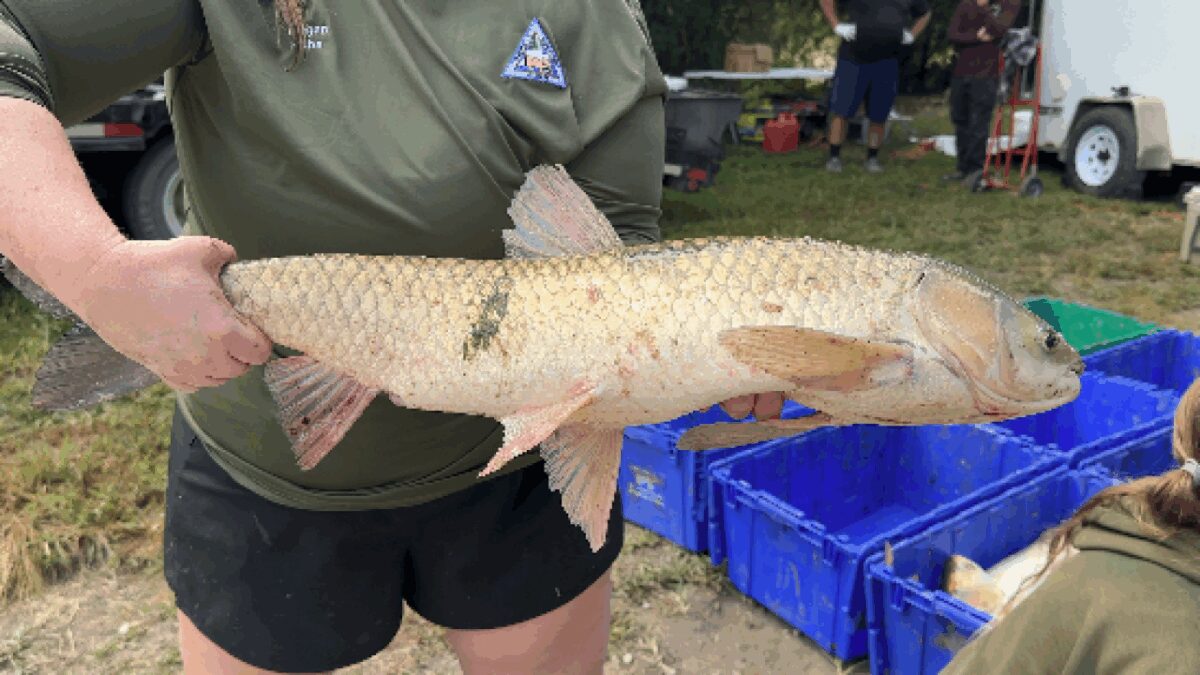Missouri Department of Conservation to remove 40,000 pounds of invasive carp from Platte River

By JuYeon Kim
Click here for updates on this story
Missouri (KSHB) — The Missouri Department of Conservation is conducting an intensive, short-term removal of invasive carp from the Platte River. The effort is in partnership with the U.S. Fish and Wildlife Service and a commercial fishing operation.
Carp were initially brought over from Asia years ago to help with water quality issues. But through accidental escapements over time, the carp have built up populations across the Midwest. With no natural predators, over population led to consequences.
According to the Missouri Department of Conservation, a female carp may spawn up to 500,000 eggs at a time.
“They are in high enough densities now that they are impacting and showing threats to our populations of native species that they compete directly with for food sources, and also indirectly with by just messing up the food web and the food chain,” said Missouri Department of Conservation’s Missouri River and Biometrics Unit Supervisor, Kasey Whiteman.
Carp swim around with their mouths open and eat large amounts of microscopic organisms like Phytoplankton and Zooplankton. Those organisms are necessary food sources for other filter feeders like paddlefish, gizzard shad, and bigmouth buffalos that coexist.
They also are dangerous to boaters and anglers.
Carp have a strong fight or flight response, which means boaters and anglers may find themselves fighting for their own safety as they dodge airborne fish.
In Missouri, an average carp weighs between five to seven pounds, but can grow up to 30 pounds.
“Ultimately, there’s a possibility you can get hit in the head or something like that, which is not fun,” said Whiteman.
The mission, however, does not stop when the fish are taken out of the water. After measurements and data collection, the fish are handed off to Greg Trial and his team at Missouri Coast Fisheries.
“We’ll take those fish and process them down to usable parts,” Trial said. “Each one of these will go into a product, so it’ll either be fertilizer, or bait product, dog treats. So we’re using something that we wouldn’t want and making it something that we need.”
It is all about sustainability and reducing waste. Ten percent of all proceeds from products made with carp go back to conservation efforts like this one.
“And the greatest hope for the fertilizer is, it’s something that we can not only help give back to the state that they can use to fertilize grassland and some of the woodlands. We can also help some local farmers with fertilizer cost. To help them keep their cost of production down and put a fertilizer that’s not burning to the crops and actually is biodegradable,” said Trial.
Trial and his team use 100% of the meat and said many people are surprised by how delicious it tastes.
“It’s second to none to salmon in Omega-3 fatty acids,” said Trial. “I have friends that try it and they go, ‘Wow, this is the best hickory smoked salmon I’ve ever had.’ And then you go, ’It’s silver carp.’ ‘What?'”
Crews will be removing 20,000 pounds of invasive carp from the Platte River through Thursday, September 11.
After a week off, crews will return for another week to remove an additional 20,000 pounds.
“Benefitting the community, benefit businesses, as well as benefitting the environment, is a win, win, win,” said Whiteman.
Please note: This content carries a strict local market embargo. If you share the same market as the contributor of this article, you may not use it on any platform.